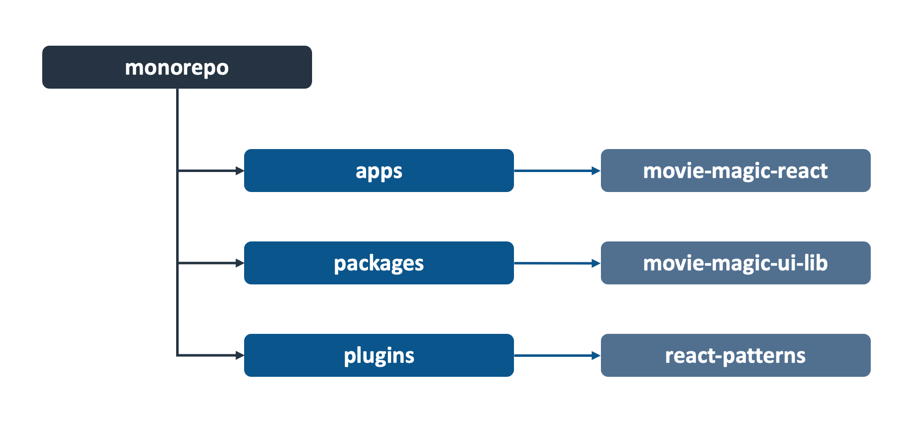Monorepo Structure
Background
Code Shaper plugins are built with the assumption that its generators will be used in a monorepo. It is possible to use Code Shaper in a polyrepo (a repo that stores only one project), however we recommend using a monorepo – even if you house only a single project in it. Monorepos give you a good structure to house things like plugins, generators, and testing frameworks while keeping the option to add more projects if needed.
Having said that, your monorepo doesn't have to be enterprise-wide, with hundreds of projects in it. A small group of related projects should be fine.
This document describes the recommended structure for a monorepo. Please feel free to fine tune it based on your needs - all the plugins should work just fine.
Code Shaper uses Turborepo as its monorepo. However,
any monorepo with the concept of workspaces should work as well. Examples of
such monorepos are
npm Workspaces and
yarn Workspaces. In
fact, Turborepo builds on top of these and provides additional capabilities.
Code Shaper plugins simply look for the workspaces property in the root
package.json to understand the structure of your monorepo.
Recommended Structure
We recommend the following workspace structure for your monorepo. The diagram includes some examples for each workspace type.

This equates to the following workspaces definition in package.json:
{
"workspaces": ["apps/*", "packages/*", "plugins/*"]
}
The workspaces are intended to be used as follows:
- apps: contains full-fledged applications that can be deployed on their own. Examples are web apps, API servers (REST and GraphQL), microservices, etc.
- packages: contains reusable libraries that apps depend on.
- plugins: contains custom plugins created by the project team. These generally satisfy project specific standards and patterns. However, plugins that are reusable across projects can also be housed here and published to npm (or elsewhere) for easier consumption and adoption. Please see Code Shaper Plugin Directory for a list of publicly available plugins.